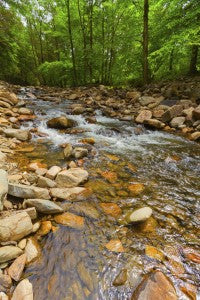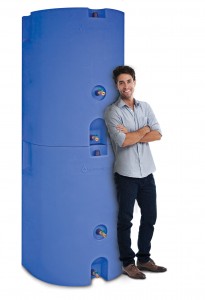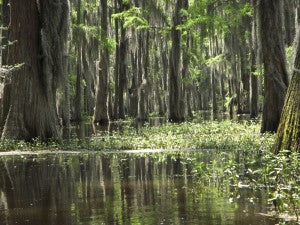
If you’re out in the wild and see a clear stream or river, you might think you've found safe drinking water. After all, you can see to the bottom and there aren’t any weird-looking floaties. Before you take even a sip from that water source, you may want to treat it. Actually, let me rephrase that. You will want to treat it. Drinking water that hasn’t been filtered or purified can have disastrous results. Diarrhea, fatigue, and vomiting are just a few of the negative side effects of drinking untreated water, not to mention diseases such as cholera that can crop up from it. So yeah, you’ll want to treat the water. When it comes to securing clean, safe drinking water for you and your family, knowing the differences between filtering and purifying, as well as how and where to store said water, can help you make an educated decision as to which type of tool you will need. And that’s exactly what we’re going to talk about today. Filters [caption id="attachment_18710" align="alignright" width="300"] Get safe drinking water with Katadyn's Hiker Pro water filter[/caption] Water filters are like colanders. After you’ve finished boiling your pasta or pot stickers (or whatever it is you fancy for dinner), you dump it all into your colander. The water drains through the little holes in the strainer, while your food is unable to fit through, so it just stays behind. Water filters are the same way. They physically obstruct impurities in the water by not allowing them to pass through the filter. Filters are effective in eliminating bacteria, protozoa, and cysts, all of which can cause diseases. They may not, however filter out smaller floaties such as viruses. One of the nice things about filters is that many are small and portable, so you can take them with you camping or hiking, or even to just keep in your emergency kit. Filters like the Katadyn Hiker Pro and the Katadyn Combi are favorites of many hikers, campers, and preppers alike. Purifiers While filters get rid of many harmful substances, purifiers make water safe from the remaining impurities such as bacteria and viruses. Usually this is done by using chlorine or iodine. Purifiers will not, however, take out sediment and other larger, harmful things, such as heavy metals. These purification tablets are a popular choice among hikers, campers, preppers, and travelers, as they are small, easy to carry, and can be used to treat water wherever you are, especially during an emergency. Purification can be used after filtering your water for extra security in your water's safety. Storing Water Another option to ensure you have safe drinking water is to have a long-term water storage. Of course, that water needs to be clean when it was packaged. There are a few options to go about storing water. The first is to get pre-packaged water. You know it’s clean and it will last quite some time. It’s also easy to grab on your way out the door in the event of an emergency. Another option is the do-it-yourself method. This is the favored way of many people. If you decided on the do-it-yourself method, make sure you use good, food-grade plastic, such as pop bottles. Don’t use containers that once housed milk or juice, as the proteins and sugars can spoil your water. [caption id="attachment_18713" align="alignright" width="205"]
Get safe drinking water with Katadyn's Hiker Pro water filter[/caption] Water filters are like colanders. After you’ve finished boiling your pasta or pot stickers (or whatever it is you fancy for dinner), you dump it all into your colander. The water drains through the little holes in the strainer, while your food is unable to fit through, so it just stays behind. Water filters are the same way. They physically obstruct impurities in the water by not allowing them to pass through the filter. Filters are effective in eliminating bacteria, protozoa, and cysts, all of which can cause diseases. They may not, however filter out smaller floaties such as viruses. One of the nice things about filters is that many are small and portable, so you can take them with you camping or hiking, or even to just keep in your emergency kit. Filters like the Katadyn Hiker Pro and the Katadyn Combi are favorites of many hikers, campers, and preppers alike. Purifiers While filters get rid of many harmful substances, purifiers make water safe from the remaining impurities such as bacteria and viruses. Usually this is done by using chlorine or iodine. Purifiers will not, however, take out sediment and other larger, harmful things, such as heavy metals. These purification tablets are a popular choice among hikers, campers, preppers, and travelers, as they are small, easy to carry, and can be used to treat water wherever you are, especially during an emergency. Purification can be used after filtering your water for extra security in your water's safety. Storing Water Another option to ensure you have safe drinking water is to have a long-term water storage. Of course, that water needs to be clean when it was packaged. There are a few options to go about storing water. The first is to get pre-packaged water. You know it’s clean and it will last quite some time. It’s also easy to grab on your way out the door in the event of an emergency. Another option is the do-it-yourself method. This is the favored way of many people. If you decided on the do-it-yourself method, make sure you use good, food-grade plastic, such as pop bottles. Don’t use containers that once housed milk or juice, as the proteins and sugars can spoil your water. [caption id="attachment_18713" align="alignright" width="205"] The 320-gallon water reserve will keep you well-watered with safe drinking water[/caption] Purchasing water containers is a good option, because the quality will be good, and many (if not most) are blue in color, which helps prevent the sun from penetrating your water and helping little organisms grow. As some examples of these kinds of water containers, we carry 5-gallon jugs, 15-gallon, 30-gallon, and 55-gallon water barrels, and even a 160-gallon water reserve (the 160-gallon water reserves stack, by the way, to allow you to have a 320-gallon ultimate water reserve. That’ll keep you going for a while!). While you may not have room for a 320-gallon behemoth, the smaller barrels and containers are great options to keep in your basement, garage, or wherever it is you store water. Just remember: keep them out of direct sunlight, and the cooler the storage temperature, the better! When storing water that came from your faucet, it should be swapped out every six months. However, in order to make sure the tap water you’ve stored for a year or more is still safe to drink, Zane Satterfield (engineer scientist at West Virginia University), suggests adding four drops of plain, unscented bleach (per gallon of water) to your water container, let sit for 30 minutes, and you’ll be good to go. Standing & Stagnant Water vs. Running Water [caption id="attachment_18708" align="alignright" width="300"]
The 320-gallon water reserve will keep you well-watered with safe drinking water[/caption] Purchasing water containers is a good option, because the quality will be good, and many (if not most) are blue in color, which helps prevent the sun from penetrating your water and helping little organisms grow. As some examples of these kinds of water containers, we carry 5-gallon jugs, 15-gallon, 30-gallon, and 55-gallon water barrels, and even a 160-gallon water reserve (the 160-gallon water reserves stack, by the way, to allow you to have a 320-gallon ultimate water reserve. That’ll keep you going for a while!). While you may not have room for a 320-gallon behemoth, the smaller barrels and containers are great options to keep in your basement, garage, or wherever it is you store water. Just remember: keep them out of direct sunlight, and the cooler the storage temperature, the better! When storing water that came from your faucet, it should be swapped out every six months. However, in order to make sure the tap water you’ve stored for a year or more is still safe to drink, Zane Satterfield (engineer scientist at West Virginia University), suggests adding four drops of plain, unscented bleach (per gallon of water) to your water container, let sit for 30 minutes, and you’ll be good to go. Standing & Stagnant Water vs. Running Water [caption id="attachment_18708" align="alignright" width="300"] Standing water is a breeding ground for microorganisms.[/caption] If you Replace yourself hunting for water in the wild, running water is practically always a better option than standing or stagnant water. That’s because water that isn’t moving becomes a breeding ground for harmful microbes that can make us incredibly sick – or worse. Running water, such as in rivers and streams, make it more difficult for such dangerous life to settle down and thrive. Of course, that doesn’t necessarily make running water safe to drink, either. There are still harmful microbes floating around in rivers and creeks and streams that you’ll want to filter out. As you can see, there are plenty of options for securing safe, clean drinking water. Choose the option that’s best for you, but don’t forget to have a backup plan, just in case. After all, if you have a 55-gallon water barrel and are forced to evacuate, you’ll be happy you have your handy-dandy Katadyn Hiker water filter (or other water filter that suits you better). On the other hand, your favorite water filter won’t be much good in case of a drought, but your 320-gallon water reserve will most certainly come in handy. And of course, a combination of resources is always a great option. How do you acquire clean, safe drinking water? Let us know in the comments below!
Standing water is a breeding ground for microorganisms.[/caption] If you Replace yourself hunting for water in the wild, running water is practically always a better option than standing or stagnant water. That’s because water that isn’t moving becomes a breeding ground for harmful microbes that can make us incredibly sick – or worse. Running water, such as in rivers and streams, make it more difficult for such dangerous life to settle down and thrive. Of course, that doesn’t necessarily make running water safe to drink, either. There are still harmful microbes floating around in rivers and creeks and streams that you’ll want to filter out. As you can see, there are plenty of options for securing safe, clean drinking water. Choose the option that’s best for you, but don’t forget to have a backup plan, just in case. After all, if you have a 55-gallon water barrel and are forced to evacuate, you’ll be happy you have your handy-dandy Katadyn Hiker water filter (or other water filter that suits you better). On the other hand, your favorite water filter won’t be much good in case of a drought, but your 320-gallon water reserve will most certainly come in handy. And of course, a combination of resources is always a great option. How do you acquire clean, safe drinking water? Let us know in the comments below! 

59 comments
John H.
We use a water filter.
Kristen H.
I acquire clean, safe drinking water by buying bottled water. Basically all the water I drink these days is bottled water. Having bottled water around the house has certainly helped out when there have been water main breaks.
Jennifer H.
I acquire it with filters.
Joe
Have one of these ,works great!!
Dar
we are buying 5 and 6 gallon jugs and have straws on hand too
Mark Payne
municipal water source. If that is not an option, katadyn pocket.
Linda Bragg
We have been storing water in drums and my husband got some canned water.
Nancy
My problem is converting salt water to usable drinking water. Any suggestions?
Dewey K
To clean water, it would depend where I get it. Hot water heater, mostly clean. All other sources would be run thru a combination of filters like Katadyn’s Hiker Pro or Sawyer and a SeriPen and or bleach.